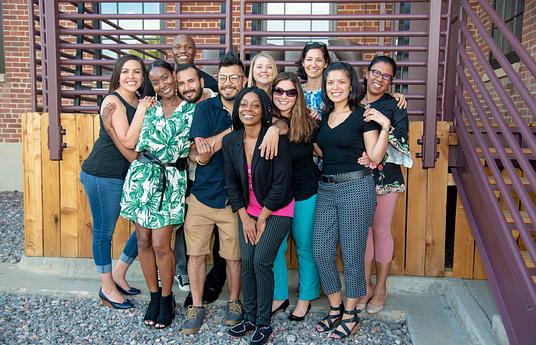West Virginia
As of June 2020, West Virginia’s labor force participation rate was only 53 percent, among the lowest in the United States. That's why the state's educators, nonprofits, and businesses are working harder than ever to retain West Virginia's young people and prepare them for more prosperous futures at home. By ensuring that West Virginia's students are ready for in-demand jobs and equipped with essential career skills such as collaboration and organization, the Simulated Workplace program is transforming education and workforce development throughout the Mountain State.
Simulated Workplace
One challenge that many businesses and industries face today is finding qualified workers. As students prepare to join the workforce, it is crucial to ensure that they leave school with in-demand, real-world skills. These skills — which include communication, problem solving, goal setting, and more — are often best learned through hands-on experience in a workplace setting.
To that end, the West Virginia Department of Education and the state's business sector collaborated to create the Simulated Workplace: a statewide program in which student-led businesses replace traditional classrooms in order to replicate real-world work experiences. Teachers become consultants, while students become CEOs, safety managers, project managers, and more. “Company meetings” largely replace lectures, and students themselves take charge of their companies’ success. Real-world employers "inspect" and guide the companies, and all students apply to the program, learning interview skills from peers, teachers, and employers alike.
Now in its seventh year, Simulated Workplace has enhanced the apprenticeship model in West Virginia to include “soft skills” in addition to the technical skill sets offered by apprenticeships. Because these soft skills are in high demand by employers, graduates of the Simulated Workplace often quickly rise through the ranks upon taking real-world jobs.
Simulated Workplace's Commitment
By giving students a voice in what their companies do and how they do it, the Simulated Workplace has boosted attendance, stimulated student interest in entrepreneurship, and positively impacted West Virginia’s economy.
Today, West Virginia has more than 1,200 student-led companies with more than 24,000 students participating. Representatives from 25 states, 50 school districts, and the nation of Australia have all visited West Virginia to learn more about Simulated Workplaces and to replicate aspects of the program.
Examples and highlights:
Simulated Workplace is transforming the lives of West Virginia’s career and technical education students, while spurring systematic social and economic development.
- Participating students master high-level technical skills that “stack” along a career pathway, embrace business processes and expectations, and gain soft skills such as leadership, communication, teamwork, and critical thinking. Students create products and services with a real-world impact: In the wake of severe flooding in 2016, for example, student-run companies built small, fully functional homes for affected families.
- During the school year, Simulated Workplace companies participate in an economic/community service project. The project provides opportunities for students to meet with community leaders, including mayors, county commissioners, and economic developers to determine what student-led companies can do that will result in a positive economic impact. To date, student-led companies have built “Tiny Home” villages, led county-wide beautification projects, refurbished old buildings, and more.
- Among Simulated Workplace participants, 97 percent give the program an exemplary rating, with 93 percent of students reporting that what they experience in Simulated Workplace environments relates to what they need to know on the job.
- Among students who have completed the Simulated Workplace program, 95 percent have gone on to higher education, the workforce, or the military.

.png)
